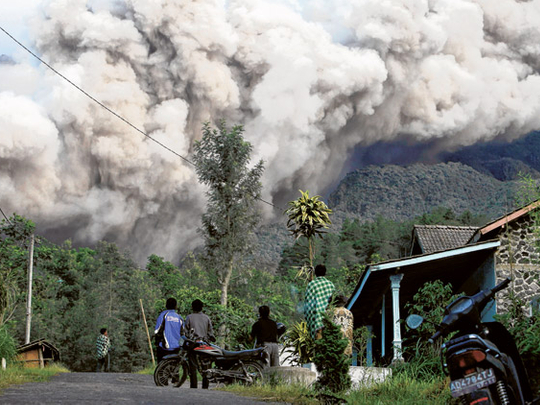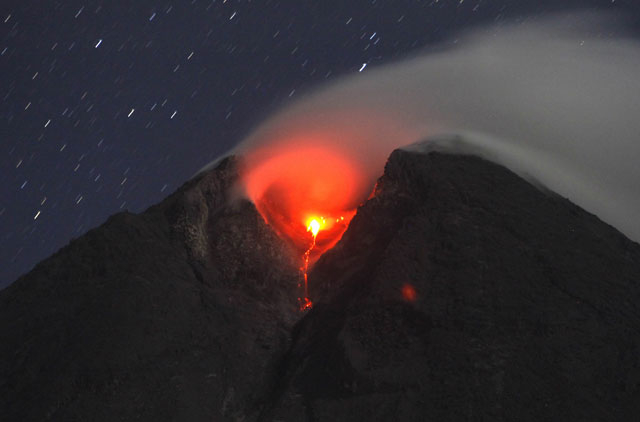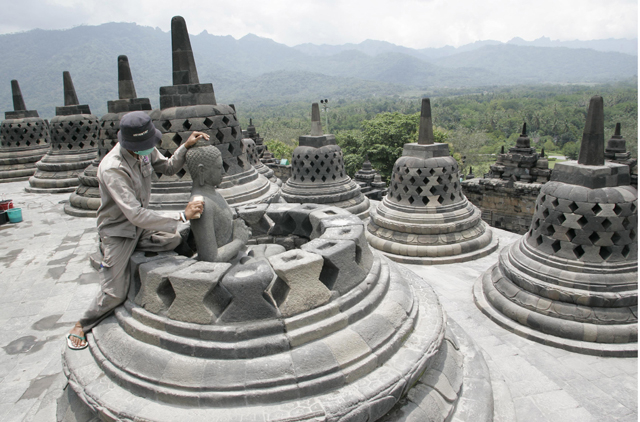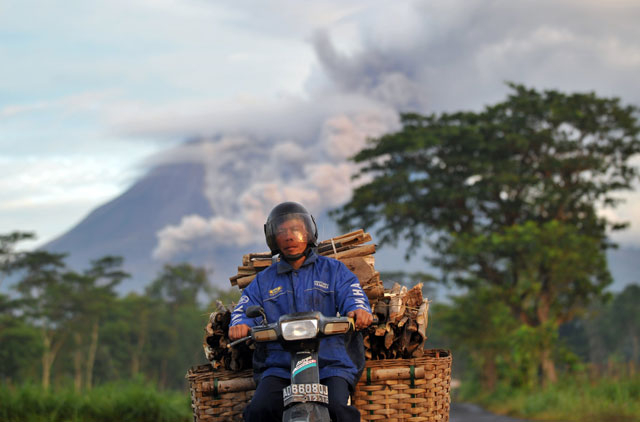
Mount Merapi: International airlines halted flights to airports near Indonesia's most dangerous volcano on Tuesday, as fiery lava lit the rumbling mountain's cauldron and plumes of smoke blackened the sky.
Scientists warned, meanwhile, that the slow but deadly eruption could continue for weeks, like a "marathon, not a sprint."
No casualties were reported in Mount Merapi's latest blasts, which came as Indonesia struggled to respond to an earthquake-generated tsunami that devastated a remote chain of islands.
The two disasters unfolding in separate parts of the country have killed nearly 470 people and strained the government's emergency response network.
Indonesia, a vast archipelago of 235 million people, is prone to earthquakes and volcanos because it sits along the Pacific "Ring of Fire," a horseshoe-shaped string of faults that lines the western and eastern Pacific.
Merapi - one of 22 active volcanoes now on alert - has killed 38 people since springing back to life just over a week ago, at times forcing the temporary closure of two nearby airports.
Officials in Yogyakarta, the gateway to the famed 9th-century Borobudur temples visited by 1 million tourists a year, and nearby Solo, have cited poor visibility and heavy ash on the runway.
Although operations were running normally Tuesday, Malaysia's budget airline AirAsia and Singapore's SilkAir for the first time announced the temporary suspension of international flights to those airports, 30 kilometres from the crater.
There have been more than 10 large eruptions at Merapi since the first eruption on October 26, including a violent burst Monday that appeared to have eased pressure inside the crater by creating a vent for magma to escape.
A series of three much smaller eruptions followed on Tuesday.
"There's no way of knowing for sure, of course," said Safari Dwiyono, who has observed the mountain for more than 15 years. "But based on what we've seen in the last few days, we're hoping there won't be a massive explosion. It's looking like we're in for a marathon, not a sprint."
The nearly 70,000 villagers evacuated from the area around Merapi's once-fertile slopes - now blanketed by gray ash - have been told they could be expected to stay in crowded government camps for at least three more weeks.
More than 1,300 kilometres to the west, meanwhile, a C-130 transport plane, six helicopters and four boats were ferrying aid to the most distant corners of the Mentawai islands, where last week's tsunami destroyed hundreds of homes, schools, churches and mosques. The tsunami death toll stood Monday at 431, the National Disaster Management Agency said.
President Susilo Bambang Yudhoyono said relief efforts must be sped up, expressing dismay that it took days for aid to reach the isolated islands, though he acknowledged that violent storms were largely to blame.
The fault line that spawned the killer wave - and the 2004 Indian Ocean tsunami - is the meeting point of the two of the Earth's dozen major plates, which have been pushing against and under each other for millions of years, causing huge stresses to build up.
The government has raised alert levels of 21 other volcanos to the second- and third- highest levels in the last two months because they have shown an increase in activity, state volcanologists Syamsul Rizal said Monday.
That's twice the number usually on the government "watch" list.

















